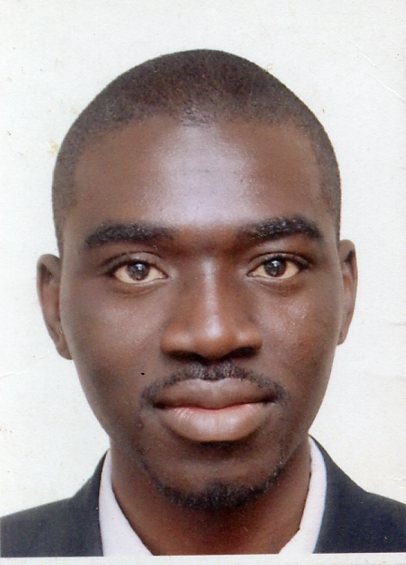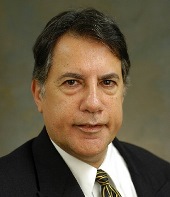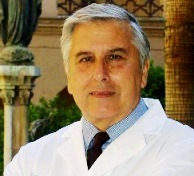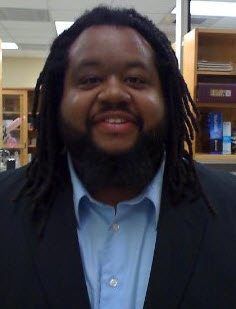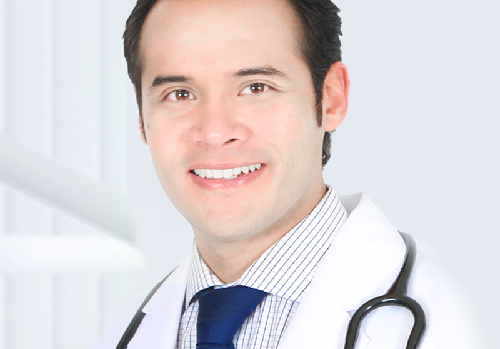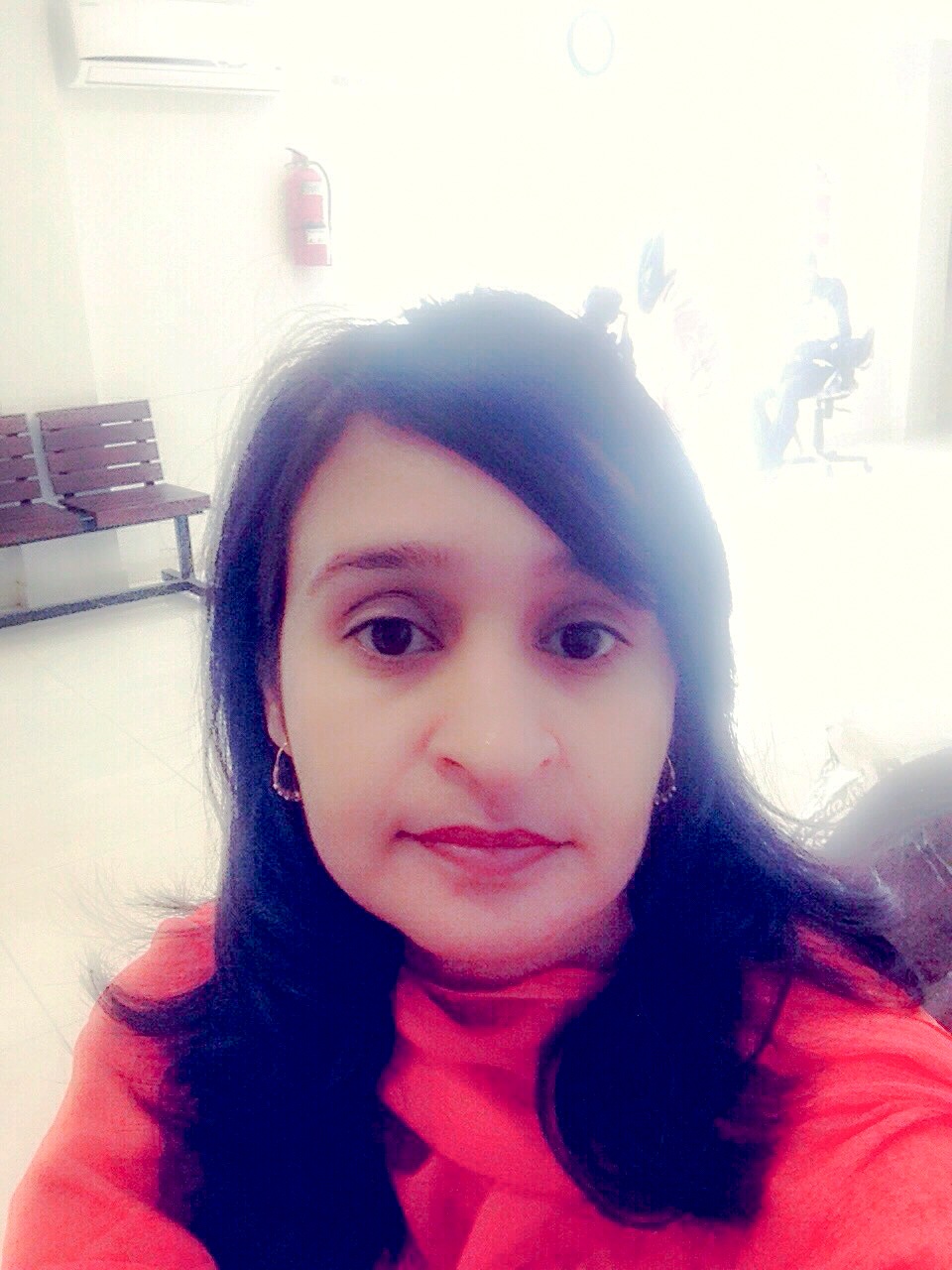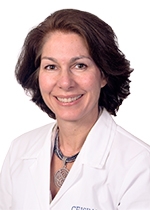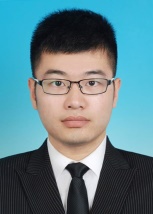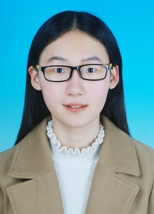Theme: Modern Research and Developments in Cellular Therapies, Stem Cells & Bio Medical Engineering
Cellular Therapies 2018
Venue :
Hilton New York JFK Airport Hotel,
Address: 144-02 135th Avenue, Jamaica,
New York 11436 , USA Phone: +1 718.269.3041

Annual Congress on Cellular Therapies, Cancer, Stem Cells and Bio Medical Engineering, October 17-18, 2018 Ney York, USA hosted by Conferences Series LLC Ltd . Through the theme “Modern Research and Developments in Cellular Therapies, Stem Cells & Bio Medical Engineering" conference will explore the advances in Cell Biology, Stem Cell Therapeutics, Biomedical engineering, Medical Approaches, Translational Therapies, Computational Technologies, etc. This conference brings a novel and International mixture of giant and medium for Cell Therapies, Stem Cells and Biomedical Engineering. The leading universities and Stem cell analysis establishments creating the conference an excellent platform to share expertise, foster collaborations across trade and world and assess rising technologies across the world.
Conferences Series LLC Ltd Organizes 1000+ Global Events every year across USA, Europe & Asia with support from 1000 more scientific societies and Publishes 700+ Open access journals which contains over 50000 eminent personalities, reputed scientists as editorial board members. To know more about the Conferences Series LLC Ltd visit: http://conferenceseries.com/.
Who Should Attend
The Cellular Therapies 2018, Baltimore, USA offers a platform for the Doctors, Cell Therapists, Engineers and experts both from Industry and Academia working in various sub domains of Cell Biology ranging from classical science to the advanced technologies and image analysis in Biomedical engineering including biomedical diagnosis and therapy.
Professionals from Bio Medical Laboratories, Hospitals, and Academics:
Directors, Deans, Research Professionals, Laboratory heads, Lab managers, Lab technicians, Laboratory Professionals, Medical, Biomedical scientists, Professors, Associate Professors, Assistant Professors, Research Practicing pathologist, Research Fellows, Medical students, Residents, working in the arena of Cell Biology and its allied fields, Medical oncologists - Chemotherapy, Surgical oncologists – Biopsies, Radiation oncologists - Radiation therapy, Bio Engineers and Cell , Stem Cell and Biomedical engineering related social workers and many more.
Industry partners and professionals related to Cellular Therapies:
Oncology, Diagnostic Devices, Imaging Products, Biomedical Lab Equipment manufacturers, Commercial Diagnostics laboratories, Clinical Research Organizations (CRO), Lab reagents, Assays and Kits suppliers, Bio Medical service providers etc., Leading companies with Bio Medical laboratory/ Oncology Services, Genomic Health, Bio-Reference Laboratories which includes like Alere, Laboratory Corporation of America, Myriad Genetics, Neo Genomics, Bio Medical Diagnostics, Sonic Healthcare Limited, Spectra Laboratories, SYNLAB International GMBH.
Why to attend Cellular Therapies 2018 ?
The Cellular Therapies 2018 brings together Bio Engineering, Cell, Stem Cell professionals from around the world to discuss state-of-the-art treatment modalities, new therapies and ongoing controversies in the field
- Best platform to develop new partnership and collaborations.
- Sharpen your skills and become a expert to their particular field.
- Best location to speed up your route into every territory in the World.
- Gain new ideas, tools and tactics.
- Conferences are great way to refuel yourself and chances to shine.
- 90% our conference attendees are the Key contact in their labs purchasing decisions.
- Our exhibitor booths were visited 4-5 times by 80% of the attendees during the conference.
- Network development with both Academia and Business.
Details of Cellular Therapies 2018 in USA:
Conference Series LLC Ltd is organizing Cellular Therapies Conferences in 2018 at New York, USA. We organize Genetics & Molecular Biology Meetings in the fields related to Cell Biology, Molecular Biology, Cancer Biology, Stem Cells and Biomedical Engineering and recent innovations in Cancer Therapeutics, Stem Cells and Biomedical Engineering.
|
Conference Name |
Place |
Date |
|
New York, USA |
Oct 17-18, 2018 |
1. Cell Therapy
Cell therapy or cytotherapy is the transfer of cells into a patient with a goal of improving the disease. From beginning blood transfusions were considered to be the first type of cell therapy to be practised as routine. Later, Bone marrow transplantation has also become a well-established concept which involves treatment of many kind of blood disorders including anemia, leukemia, lymphoma and rare immunodeficiency diseases. Alternative medical practitioners perform cell therapy in the form of several different names including xenotransplant therapy, glandular therapy and fresh cell therapy. It has been claimed by the proponents of cell therapy that it has been used successfully to repair spinal cord injuries, strengthen weaken immune system, treats autoimmune diseases like AIDS, help patients with neurological disorders like Alzheimer’s disease, Parkinson’s disease and epilepsy.
- Allogeneic Cell Therapy.
- Human embryonic stem cells.
- Mechanisms of Action.
- Neural Stem Cell Therapy.
- Mesenchymal Stem Cell Therapy.
- Hematopoietic stem cell transplantation.
Related Conferences: 10th World Congress and Expo on Cell & Stem Cell Research, March 19-21, 2018 in New York, USA; 2nd Annual Summit on Cell Therapy and Stem Cell Research, Nov 9-10, 2018, Atlanta, USA; Cell & Gene Therapy World Event, Jan 22-25, 2018, Miami, USA; Combined CAR-T Congress Europe, Jan 30-31, 2018, Berlin, Germany; Annual Cell and Gene Therapy Innovation Summit, Feb 7-8, 2018, Berlin, Germany; 3rd Annual Genome Editing & Engineering Conference, Feb 8-9, 2018, San Diego, CA, USA; International Society for Bio Process Technology 8th Spring Meeting- Viral vectors and vaccines, Mar 5-7, 2018, Norfolk, Virginia.
2. Gene Therapy
Gene therapy basically involves the introduction or alteration of genetic material within a cell or organism with an intention of curing the disease. Both cell therapy and gene therapy are overlapping fields of biomedical research with the goals of repairing the direct cause of genetic diseases in DNA or cellular population respectively. The discovery of recombinant DNA technology in the 1970s provided tools to efficiently develop gene therapy. Scientists use these techniques to readily manipulate viral genomes, isolate genes and identify mutations involved in human disease, characterize and regulate gene expressions, and engineer various viral and non-viral vectors. Various long term treatments for anemia, haemophilia, cystic fibrosis, muscular dystrophy, Gauscher’s disease, lysosomal storage diseases, cardiovascular diseases, diabetes and diseases of bones and joints are resolved through successful gene therapy and are elusive today.
Related Conferences : International Conference on Oncogenesis and Oncologic Emergency Medicine September 17-18, 2018 San Diego, California, USA. 2nd Annual Summit on Cell Signaling and Cancer Therapy, Sep 19-20, 2018, Philadelphia, USA; 2nd Annual Summit on Cell Therapy and Stem Cell Research, Nov 9-10, 2018, Atlanta, USA; 9th International Conference & Exhibition on Tissue Preservation and Biobanking, Nov 9-10 2018, Atlanta, USA; 10th World Congress and Expo on Cell & Stem Cell Research, March 19-21, 2018 in New York, USA; British Society for Gene and Cell Therapy (BSGCT) Public Engagement, Mar 15, 2018, Oxford, UK; International Society for Cellular Therapy (ISCT) Annual Meeting, May 2-5, 2018, Montreal, Canada; American Society of Gene and Cell Therapy (ASGCT) 21ST Annual Meeting, May 16-19, 2018, Chicago, IL, USA; Gene Therapy Bioproduction Conference, Aug 13-16, 2018, Boston, USA; XXVI Congress of the European Society of Gene and Cell Therapy (ESGCT), Oct 16-19, 2018, Lausanne, Switzerland.
3. Cancer Gene Therapy
Cancer therapies are drugs or other substances that block the growth and spread of cancer by interfering with specific molecules (molecular targets) that are involved in the growth, progression and spread of cancer. Many cancer therapies have been approved by the Food and Drug Administration (FDA) to treat specific types of cancer. The development of targeted therapies requires the identification of good targets that is, targets that play a key role in cancer cell growth and survival. One approach to identifying potential targets is to compare the amounts of individual proteins in cancer cells with those in normal cells. Proteins that are present in cancer cells but not normal cells or that are more abundant in cancer cells would be potential targets, especially if they are known to be involved in cell growth or survival.
- RNAi approaches
- Drug resistance
- Hematopoietic progenitor cell gene transfer
- Cellular therapies
- Ribozyme technology
- Gene delivery systems (viral and non-viral)
- DNA synthesis and repair
Related Conferences : 2nd Annual Summit on Cell Therapy and Stem Cell Research, Nov 9-10, 2018, Atlanta, USA. International Conference on Oncogenesis and Oncologic Emergency Medicine September 17-18, 2018 San Diego, California, USA; 2nd World Biotechnology Congress, Dec 4-5 2017, Sao Paulo, Brazil; 9th International Conference & Exhibition on Tissue Preservation and Bio banking, Nov 9-10 2018, Atlanta, USA; 2nd Annual Summit on Cell Signaling and Cancer Therapy, Sep 19-20, 2018, Philadelphia, USA; 10th World Congress and Expo on Cell & Stem Cell Research, March 19-21, 2018 in New York, USA; British Society for Gene and Cell Therapy (BSGCT) Annual Conference Autumn 2018, Nov 23, 2018, London, UK; XXVII Congress of the European Society of Gene and Cell Therapy (ESGCT), Oct 28-31, 2018, Barcelona, Spain; International Society for Stem Cell Research (ISSCR) 2018 Annual Meeting, June 20-23, 2018, Melbourne, Australia; The 2018 World Stem Cell Summit, Jan 22-26, 2018, Miami, Florida; ICSCB 2018 : 20th International Conference on Stem Cell Biology, March 12-13, 2018, Miami, USA
4. Immunotherapy
Due to rapidly advancing field of cancer immunology in past few years, there has been production of several new methods of treating cancer called Immunotherapies. Immunotherapy is a type of treatment that increases the strength of immune response against tumors either by stimulating the activities of specific components of immune system or by counteracting signals produced by cancer cells that suppress immune responses. Some types of immunotherapy are also called as biologic therapy or biotherapy. Recent advancements in cancer immunotherapies have provided new therapeutic approaches. These include tumor-associated macrophages as treatment targets in oncology, in-situ activation of platelets with checkpoint inhibitors for post-surgical cancer immunotherapy, immune checkpoint blockade and associated endocrinopathies and many more.
Related Conferences : International Conference on Oncogenesis and Oncologic Emergency Medicine September 17-18, 2018 San Diego, California, USA.; Cell & Gene Therapy World Event, Jan 22-25, 2018, Miami, USA; Combined CAR-T Congress Europe, Jan 30-31, 2018, Berlin, Germany; Annual Cell and Gene Therapy Innovation Summit, Feb 7-8, 2018, Berlin, Germany; 3rd Annual Genome Editing & Engineering Conference, Feb 8-9, 2018, San Diego, CA, USA; International Society for Bio Process Technology 8th Spring Meeting- Viral vectors and vaccines, Mar 5-7, 2018, Norfolk, Virginia.
5. Genetic Medicine
Genetic Medicine or Medical Genetics is the branch of medicine that differs from human genetics, and involves the diagnosis and management of hereditary disorders. Human genetics may or may not apply to medicine, but medical genetics refers to the application of genetics to medical care. Genetic Medicine basically involves different areas such as gene therapy, personalized medicine, predictive medicine and the rapidly emerging new medical specialty. Now a days, medical genetics has wide range of scopes in many conditions involving birth defects and dysmorphology, autism, mental retardation, skeletal dysplasia, mitochondrial disorders, cancer genetics, connective tissue disorders and some more.
Related Conferences : International Conference on Oncogenesis and Oncologic Emergency Medicine September 17-18, 2018 San Diego, California, USA. 10th World Congress and Expo on Cell & Stem Cell Research, March 19-21, 2018 in New York, USA; British Society for Gene and Cell Therapy (BSGCT) Public Engagement, Mar 15, 2018, Oxford, UK; International Society for Cellular Therapy (ISCT) Annual Meeting, May 2-5, 2018, Montreal, Canada; American Society of Gene and Cell Therapy (ASGCT) 21ST Annual Meeting, May 16-19, 2018, Chicago, IL, USA; Gene Therapy Bioproduction Conference, Aug 13-16, 2018, Boston, USA; XXVI Congress of the European Society of Gene and Cell Therapy (ESGCT), Oct 16-19, 2018, Lausanne, Switzerland.
6. Clinical and Translational Research
Translational Research on the other hand includes two areas. One is the process of utilizing discoveries generated in the laboratory during research, and in preclinical studies, to the development trials and studies in humans. Second arena of translation concerns on research aimed at enhancing the adoption of best practices in the community. An important part of translational science also includes cost effectiveness of prevention and treatment strategies. According to National Institute of Health (NIH), Clinical Research is defined in 3 ways i.e.(1) Patient oriented research. Research which is conducted with human subjects (or on material of human origin such as tissues, specimens and cognitive phenomena) for which an investigator (colleague) directly interacts with human subjects. This definition excludes the in vitro studies that utilize human tissues that cannot be linked to a living individual. Patient oriented research involves: (a) therapeutic interventions, (b) mechanisms of human disease, (c) clinical trials, or (d) development of new technologies. (2) Epidemiological and behavioral investigations. (3) Outcomes research and health services research.
Related Conferences: International Conference on Oncogenesis and Oncologic Emergency Medicine September 17-18, 2018 San Diego, California, USA. 2nd Annual Summit on Cell Signaling and Cancer Therapy, Sep 19-20, 2018, Philadelphia, USA; 10th World Congress and Expo on Cell & Stem Cell Research, March 19-21, 2018 in New York, USA; British Society for Gene and Cell Therapy (BSGCT) Annual Conference Autumn 2018, Nov 23, 2018, London, UK; XXVII Congress of the European Society of Gene and Cell Therapy (ESGCT), Oct 28-31, 2018, Barcelona, Spain; International Society for Stem Cell Research (ISSCR) 2018 Annual Meeting, June 20-23, 2018, Melbourne, Australia; The 2018 World Stem Cell Summit, Jan 22-26, 2018, Miami, Florida; ICSCB 2018 : 20th International Conference on Stem Cell Biology, March 12-13, 2018, Miami, USA
7. Cell Therapy Bioprocessing
Cell Therapy Bioprocessing activity mainly focuses to accelerate the safe, cost- effective translations and clinical efficacious of cell therapies into commercial products. This activity covers the entire range of cell therapy activities as well as tissue engineering. In order to succeed, commercial success of at least a few late-stage products are required to develop which will be funded to develop next generation tools and technologies for this field. Recent achievements include, preclinical filing for Phase 1 clinical trials for cell therapy in acute spinal cord injury, clinical proof of concept studies in tissue- engineered trachea, clinical trials for tissue-engineered larynx and routine clinical practice in the regeneration of corneas. The future research priorities will focus on novel cell and bioprocess engineering techniques in order to improve the manufacturing efficacy and methods for health technology assessment to support rapid clinical adoption of new cell therapies.
Related Conferences : International Conference on Oncogenesis and Oncologic Emergency Medicine September 17-18, 2018 San Diego, California, USA. 2nd World Biotechnology Congress, Dec 4-5 2017, Sao Paulo, Brazil; Cell & Gene Therapy World Event, Jan 22-25, 2018, Miami, USA; Combined CAR-T Congress Europe, Jan 30-31, 2018, Berlin, Germany; Annual Cell and Gene Therapy Innovation Summit, Feb 7-8, 2018, Berlin, Germany; 3rd Annual Genome Editing & Engineering Conference, Feb 8-9, 2018, San Diego, CA, USA; International Society for Bio process Technology 8th Spring Meeting- Viral vectors and vaccines, Mar 5-7, 2018, Norfolk, Virginia.
9. Stem Cells Growth and Regeneration
- Types of stem cell and stem cell therapy
- Stem cell Banking
- Stem cell biomarkers and novel approaches in stem cell technologies
- Cellular plasticity and reprogramming
- Cell and Organ Regeneration
- Stem Cells Growth Development and Regeneration
10. Stem Cell Therapeutics in Modern era
Stem-cell therapy is the use of stem cells to treat or prevent a disease or condition. Bone is the most widely used stem-cell therapy, but some therapies derived from umbilical cord blood are also in use. Research is underway to develop various sources for stem cells, and to apply stem-cell treatments for neurodegenerative diseases and conditions such as diabetes, heart disease and other conditions. Stem-cell therapy has become controversial following developments such as the ability of scientists to isolate and culture embryonic stem cells, to create stem cells using somatic cell nuclear transfer and their use of techniques to create induced pluripotent stem cell. This controversy is often related to abortion politics and to human cloning. Additionally, efforts to market treatments based on transplant of stored umbilical cord blood have been controversial.
- Novel Stem Cell Technologies
- Efficient cell/dna Delivery and microencapsulation techniques
- Cancer therapy
- Rheumatoid arthritis and Spinal cord injury
- Parkinson’s disease
- Severe burns and diabetes
- Imaging technologies, single molecule imaging, and super-resolution
- Proteomic and genomic methods
- Normal and diseased organs and therapeutics
11. Clinical Applications of Stem Cells
- Stem cells in tissue engineering
- Translating stem cell research into clinical medicine: FDA approved clinical trials
- Bone marrow transplantation to treat cancer and other diseases
- Stem cell therapy for type I diabetes
- Generation of pancreatic islets from stem cells
- Promoting endogenous stem cell proliferation in the treatment of depression
- Stem cells will offer revolutionary therapeutics for regenerative medicine
12. Cancer Cell Biology
Cancer stem cells are cancer cells that possess characteristics associated with normal stem cells, specifically the ability to give rise to all cell types found in a particular cancer sample. CSCs are therefore tumorigenic, perhaps in contrast to other non-tumorigenic cancer cells. CSCs may generate tumours through the stem cell processes of self-renewal and differentiation into multiple cell types. Such cells are hypothesized to persist in tumours as a distinct population and cause relapse and metastasis by giving rise to new tumours. Therefore, development of specific therapies targeted at CSCs holds hope for improvement of survival and quality of life of cancer patients, especially for patients with metastatic disease.
- Cancer stem cells
- Oncogenes and tumor suppressors
- Tumor invasion and metastasis
- Tumor microenvironment
- Cancer therapy
13. Biomedical Engineering
Biomedical Engineering is the science of application of engineering principles to the fields of biology and health care. Bioengineers work with doctors, therapists and researchers to implement systems, equipment and devices in order to solve clinical problems which focus on the advances that improve human health and health care at all levels. Clinical engineering is a special field within Biomedical engineering responsible primarily for applying and implementing medical technology to optimize healthcare delivery.
Related Clinical Engineering Conferences: 4th Biomedical Engineering Conference, October 16-17, 2017 Osaka, Japan; 13th International Conference on Advanced Materials and Nanotechnology, October 26-28, 2017 Osaka, Japan; 8th International Conference on Tissue Science and Regenerative Medicine, September 11-12, 2017, Singapore; 3rd Annual Congress on Bioscience, October 16-17, 2017, Dubai, UAE; 4th International Congress on Synthetic Biology and Genetic Engineering, Nov 16-17, 2017, Singapore; The 6th International Conference on Biomedical Engineering and Biotechnology, October 17th - 20th, 2017, Guangzhou, China; 4th International Conference on Biomedical and Bioinformatics Engineering (ICBBE 2017), November 12-14, 2017, Seoul, South Korea; 5th Annual Single Cell Analysis Asia Congress 2017, 10-11 October 2017, Singapore; 16th Human Proteome Organization World Congress, September 17-21, 2017, Dublin, Ireland; Antibody Engineering and Therapeutics, December 11-15, 2017, San Diego, USA; Society for Biological Engineering, Biomedical Engineering Society (BMES), Biomedical Engineering Society (BES), The Canadian Medical and Biological Engineering Society (CMBES), Biomedical Sciences Society, Clinical Engineering Society of Ontario (CESO)
14. Biomaterials and Biomechanics
Biomechanics is the study of systems and structures of biological organisms from the smallest plants to the largest animals react with external stimuli. In animals, biomechanics often refers to the study of how the skeletal and musculature systems work under different cases. In biomechanics more generally, scientists often try to apply physics and other mathematical based forms of analysis to discover the limits and capabilities of biological systems. Biomaterials are substances that are used in medical devices or in contact with biological systems. Biomaterials use impression from medicine, biology, chemistry, materials science and engineering.
Related Biomechanics Conferences: International Conference on Oncogenesis and Oncologic Emergency Medicine September 17-18, 2018 San Diego, California, USA. 10th World Congress on Stem Cell and Bio banking, October 23-24, 2017 Osaka, Japan; 3rd Annual Congress on Bioscience, October 16-17, 2017, Dubai, UAE; 4th International Congress on Synthetic Biology and Genetic Engineering, Nov 16-17, 2017, Singapore; 4th Biomedical Engineering Conference; 8th International Conference on Tissue Science and Regenerative Medicine, September 11-12, 2017, Singapore; 28th Annual Conference of the European Society for Biomaterials (ESB 2017), September 04-08, 2017, Athens, Greece; The 6th Asian Biomaterials Congress, October 25-27, 2017, Thiruvananthapuram, India; 8th World Congress of Biomechanics, July 08-12, 2018, Dublin, Ireland; Multi BioMe 2017, September 11-13, 2017, Vienna, Austria; 41st Annual Meeting of the American Society of Biomechanics, August 8-11, 2017, Boulder, Colorado; Society for Biomaterials (SFB), Australasian Society for Biomaterials and Tissue Engineering (ASBTE), The European Society for Biomaterials, American Society of Biomechanics, European Society of Biomechanics, International Society of Biomechanics
- Balance, Gait and Locomotion
- Biomechanical Modelling
- Cardiovascular Mechanics
- Cellular Force Transduction
- Clinical Biomechanics
- Mechanobiology
- Musculoskeletal Mechanics
- Orthotics and Prosthetics
- Physiotherapy and Sports Biomechanics
- Tissue, Cell and Molecular Mechanics
15. Medical and Nano Biotechnology
Medical and Nano biotechnology are the applications of medical and nanotechnology in the biological fields. Nano biotechnology is the fusion of nanotechnology and biotechnology in which Nano sized machines can be synthesized by incorporating biological systems to study and manipulate different biological processes at molecular level.
Related Medical Biotechnology Conferences : 4th Biomedical Engineering Conference, October 16-17, 2017 Osaka, Japan; 13th International Conference on Advanced Materials and Nanotechnology, October 26-28, 2017 Osaka, Japan; 8th International Conference on Tissue Science and Regenerative Medicine, September 11-12, 2017, Singapore; 3rd Annual Congress on Bioscience, October 16-17, 2017, Dubai, UAE; 4th International Congress on Synthetic Biology and Genetic Engineering, Nov 16-17, 2017, Singapore; The 6th International Conference on Biomedical Engineering and Biotechnology, October 17th - 20th, 2017, Guangzhou, China; Society for Biomaterials (SFB), Australasian Society for Biomaterials and Tissue Engineering (ASBTE), Tissue Engineering and Regenerative Medicine International Society (TERMIS), Society for Tissue Engineering and Regenerative Medicine (STERMI), Tissue & Cell Engineering Society (TCES)
16. Biomaterials and Tissue Engineering
Cell engineering exploits the principles and methods of engineering to the complication of cell and molecular biology of both a basic and applied nature. Tissue engineering is a technique which generates living tissue ex vivo for replacement or therapeutic applications through materials development, biochemical controls, cell culture, and genetic engineering. Tissue engineering uses biomaterials and cells to produce new tissues. Stem cells have infused great excitement in the field as a potentially powerful cell source to rebuild tissues.
- 3D Bioprinting
- Artificial Organs and Related Biomaterials
- Bioceramics
- Biocompatibility
- Biomaterial Interactions
- Biometals
- Biopolymers
- Bioreactors
- Dental Implants for Tooth Fixation
- Implant Materials
- Organ Printing
- Scaffolds in Tissue Engineering
- Stem Cell Engineering
- Surface Modifications – Nanotechnology
Related Tissue Engineering Conferences : 10th World Congress on Stem Cell and Bio banking, October 23-24, 2017 Osaka, Japan; 3rd Annual Congress on Bioscience, October 16-17, 2017, Dubai, UAE; 4th International Congress on Synthetic Biology and Genetic Engineering, Nov 16-17, 2017, Singapore; 4th Biomedical Engineering Conference; 8th International Conference on Tissue Science and Regenerative Medicine, September 11-12, 2017, Singapore; 2017 Biomaterials Science Symposium, October 23-24, 2017, New Jersey, USA; 7th International Conference on Tissue Engineering & Regenerative Medicine, October 02-04, 2017, Barcelona, Spain; Regenerative Medicine Workshop, March 21-24, 2018, South Carolina, USA; 3rd International Conference on Nanomedicine, Drug Delivery, and Tissue Engineering (NDDTE'18), APRIL 10 - 12, 2018, Budapest, Hungary; International Bone-Tissue-Engineering Congress, 12 – 14 October 2017, Munich, Germany; International Association of Nanotechnology, American Society for Nanomedicine, Asian Society for Precision Engineering and Nanotechnology (ASPEN), Australasian Society for Biomaterials and Tissue Engineering.
17. Biomedical Sensors and Instrumentation
Bioinstrumentation is the use of bioelectronics instruments for the recording or transmission of physiological information. Biomedical devices are combination of biology, sensors, interface electronics, microcontrollers, and computer programming, including biology, optics, mechanics, and electronics, chemistry, and computer science. Bioinstrumentation engineers design, frame, test, and manufacture advanced medical instruments and implantable devices into a single, more productive unit.
- Bioelectric and Biochemical Sensors
- Biomedical Devices
- Biomedical Electronics
- Bio MEMs
- Biophysical Stimulation
- Biosensors and Transducers
- Catheter, Laser and Ultrasound Interventions
- Data and Signal Acquisition
- Diagnostic Devices
- Implantable Sensor Systems
- Intelligent Instrumentation
- Microarrays
- Surgical Tools
- Therapeutic Devices
- Wearable Sensors
Related Medical Instrumentation Conferences : 4th Biomedical Engineering Conference, October 16-17, 2017 Osaka, Japan; 13th International Conference on Advanced Materials and Nanotechnology, October 26-28, 2017 Osaka, Japan; 8th International Conference on Tissue Science and Regenerative Medicine, September 11-12, 2017, Singapore; 3rd Annual Congress on Bioscience, October 16-17, 2017, Dubai, UAE; 4th International Congress on Synthetic Biology and Genetic Engineering, Nov 16-17, 2017, Singapore; The International Conference on Biomedical Engineering Innovation, October 27-31, 2017, Taiwan, Bio Devices 2018, January 19-21, 2018, Funchal, Portugal; V. International Bioengineering Conference, November 17-18, 2017, Istanbul, Turkey; 2017 Biomaterials Science Symposium, October 23-24, 2017, New Jersey, USA; 2017 Conference on Machine Intelligence in Medical Imaging, September 26-27, 2017, Baltimore, USA; Princeton Biomedical Engineering Society, Society for Biological Engineering, Biomedical Engineering Society (BMES), Biomedical Engineering Society (BES), The Canadian Medical and Biological Engineering Society (CMBES)
18. Bio Imaging and Signal Processing
Bio imaging covers the complex chain of acquiring, processing and visualizing structural or functional images of living objects or systems, including extirpation and processing of image-related information. Image processing methods, such as denoising, segmentation, deconvolution and registration methods, feature detection and classification represent an indispensable part of bio imaging as well as related data analysis and statistical tools are involved in this process.
Related Bio Imaging Conferences : International Workshop on Medical Technologies 2017, Oct 10-12, 2017, Tlemcen, Algeria; 2nd International Conference on Biomedical Imaging, Signal Processing (ICBSP 2017), Oct 18-20, 2017, New Jersey, USA; 5th International Conference on Bioimaging, Jan 19-21, 2018, Funchal, Portugal; 2nd International Conference on Biomedical Imaging, Signal Processing (ICBSP 2017), Oct 18-20, 2017, New Jersey, USA; IEEE Signal Processing Society, Bioimaging Society, European Society for Hybrid Medical Imaging (ESHI), Medical Imaging and Technology Alliance, Society for Nuclear medicine and Molecular Imaging
19. Bioinformatics and Computational biology
Bioinformatics and Computational Biology are highly flexible interdisciplinary fields which involve the study of computer sciences, biological sciences and mathematical sciences together. These include biomarker identification, drug target discovery, functional genomics and proteomics, coding sequence analysis, cross-validation analysis, forensic applications of genetics.
- Biological Algorithms
- Biological Databases
- Biomedical Computing
- Computation Biology
- Data Mining and Processing
- Gene Expression Array Analysis
- Machine Learning
- Metabolic Pathway Analysis
- Microarray Analysis
- Modeling of Molecular, Cellular, and Organ Pathways
- Pattern Recognition and Soft Computing Techniques
- Sequence Analysis
- Systems Biology
Related Bioinformatics Conferences : The 16th International Conference on Bioinformatics, September 20-22, 2017​, Shenzhen, China; The IEEE International Conference on Bioinformatics and Biomedicine (BIBM), November 13 - 16, 2017, Missouri, USA; IEEE Conference on Computational Intelligence in Bioinformatics and Computational Biology (CIBCB 2017), Aug 23-25, 2017, Manchester, UK; Australian Bioinformatics and Computational Biology Society, International Society for Computational Biology (ISCB), Hellenic Society for Computational Biology and Bioinformatics, International Society for Computational Biology, African Society for Bioinformatics and Computational Biology
20. Bio Robotics and Biosensors
Bio Robotics is a collective study of cybernetics, bionics and genetic engineering. Bio Robotics is the use of biological characteristics in living organisms as the knowledge base for developing new robot designs. Biosensors are the devices used in order to determine the concentration of substances and other parameters of biological interest even where they do not utilise a biological system directly. Biosensors basically involve the quantitative analysis of various substances by converting their biological actions into measurable signals.
Related Bio Robotics Conferences : 10th World Congress on Stem Cell and Bio banking, October 23-24, 2017 Osaka, Japan; 3rd Annual Congress on Bioscience, October 16-17, 2017, Dubai, UAE; 4th International Congress on Synthetic Biology and Genetic Engineering, Nov 16-17, 2017, Singapore; 4th Biomedical Engineering Conference, October 16-17, 2017, Osaka, Japan; 7th IEEE RAS & EMBS International Conference on Biomedical Robotics and Biomechatronics (BioRob 2018); 28th Anniversary World Congress on Biosensors, 12-15 June 2018, Miami, USA; Biodetection & Biosensors 2017, October 10-11, 2017, Cambridge, UK; 2nd Annual Bioelectronics & Biosensors Congress, November 2017, London, UK; Engineering in Medicine and Biology Society, Seattle Robotics Society, Society for Biomaterials (SFB), Society for Biological Engineering, Biomedical Engineering Society (BMES)
21. Genetic Engineering and Genomics
Genetic engineering adverts to the direct manipulation of DNA to alter an organism’s characteristics in a proper way. In most cases, use of recombinant DNA adds an extra gene to an organism to alter a trait or to add a new trait. Uses of genetic engineering include imposing the nutritional quality of food, creating pest-resistant crops, and creating infection-resistant livestock.
Related Genetic Engineering Conferences: 3rd Annual Congress on Bioscience, October 16-17, 2017, Dubai, UAE; 4th International Congress on Synthetic Biology and Genetic Engineering, Nov 16-17, 2017, Singapore; 3rd Annual Genome Editing Congress, 9-10 November 2017, London, United Kingdom; World Congress on Genetic Counselling, 4-6 October 2017, Cambridge, UK; EMBL Cancer Genomics Conference, 5 - 8 November 2017, Heidelberg, Germany; 2017 NextGen Genomics, Biology, Bioinformatics and Technology (NGBT) Conference, October 02-04, 2017, Bhubaneswar, India; 67th Annual American Society of Human Genetics 2017 (ASHG 2017), October 17-21, 2017, Orlando, USA; Genetic Engineering and Society, the American Society of Human Genetics, British Society for Genetic Medicine, International Association of Environmental Mutagenesis and Genomics Societies, Genetics Society of America
22. Medical Rehabilitation and Assistive Technology
Rehabilitation engineering is the clinical and biomechanical application of engineering to provide services, research and development to assist people with disabilities. Rehabilitation engineering includes the systematic application of technologies, engineering methodologies or scientific principles to meet the needs of, and address the barriers confronted by, individuals with disabilities in areas that include education, rehabilitation, employment, transportation, independent living, and recreation. Neural engineering is the application of biomedical engineering principles to the nervous system.
- Bionics
- Computer Aided Surgery
- eHealth
- Electrotherapy
- Functional Electrical Stimulation (FES)
- Human Robot Interaction
- Implant Technology
- Lasers in Medicine
- Multimodal Imaging
- Neural Rehabilitation
- Patient Monitoring
- Point of Care Devices and Systems
- Robot Aided Surgery
Related Neural Engineering Conferences : 4th Biomedical Engineering Conference, October 16-17, 2017 Osaka, Japan; 4th International Congress on Synthetic Biology and Genetic Engineering, Nov 16-17, 2017, Singapore; 11th International Joint Conference on Biomedical Engineering Systems and Technologies, 19-21 January, 2017, Funchal, Portugal; World Congress on Medical Physics and Biomedical Engineering, June03-08, 2017, Prague, Czech Republic; The 6th International Conference on Biomedical Engineering and Biotechnology, October 17th - 20th, 2017, Guangzhou, China; 4th International Conference on Biomedical and Bioinformatics Engineering (ICBBE 2017), November 12-14, 2017, Seoul, South Korea; 41st Annual Meeting of the American Society of Biomechanics, August 8-11, 2017, Boulder, Colorado; Rehabilitation Engineering and Assistive Technology Society of North America (RESNA), Rehabilitation Engineering Society of JAPAN (RESJA), Engineering in Medicine and Biology Society, Biomedical Engineering Society (Singapore), Biomedical Engineering Society (BMES)
Market Research on Cell Therapy
The market of cell therapy in terms of revenues is $3 billion and its global market is poised to grow at a CAGR of 23.27% during the period 2017-2021. The market of stem cell therapy is expected to reach USD 145.8 million by 2021, growing at a CAGR of 11.0% during the forecast period 2016-2021. The global stem cell therapy market on the basis of the mode of treatment is segmented into allogenic and autologous stem cell therapy.
The gene therapy market in spite of presenting few marketable products and being nascent in terms of revenue generation holds tremendous growth potential. As per a new estimation carried out in a latest study, the global gene therapy industry has the potential to become a multi-million dollar industry by the end of 2018 as new products, especially those in the advanced stage of clinical studies or with pending approvals, may enter the market to boost the growth.
Importance and scope of cell therapy
Cell therapy deals with the administration of live whole cells or maturation of a specific cell population in a patient for treatment of a disease. By administrating a large number of effector cells has benefited a large number of cancer patients, transplant patients with unresolved infections and patients with chemically destroyed stem cells in eyes. Gene therapy on the other hand is expressed as an experimental treatment that involves introduction of genetic material into the cells in order to correct the defective genes. Retroviruses and adenoviruses are among the most commonly used viral vectors in trials for treating diseases under gene therapy. For example, some patients have a severe combined immunodeficiency disease (SCID) but unfortunately do not have a suitable donor for the bone marrow. Several dozens of patients have been treated with both combined cell and gene therapy approach. More evidences for wider clinical applications for both cell and gene therapy are expected as more cell and gene therapy studies progress from preclinical phase to clinical trial.
Societies associated with Cell Therapy and Gene Therapy
-
American Society of Gene and Cell Therapy (ASGCT)
-
Australasian Gene and Cell Therapy Society (AGCTS)
-
Austrian Network for Gene Therapy
-
British Society of Gene Therapy
-
European Society of Gene and Cell Therapy (ESGCT)
-
French Society of Cellular and Gene Therapy (SFTCG)
-
German Gene Therapy Society (DGGT)
-
International Society for Cancer Gene Therapy (ISCGT)
-
Irish Society for Gene & Cell Therapy (ISGCT)
-
Japan Society for Gene Therapy (JSGT)

Fig:- 1 Graph showing Gene Therapy Clinical Trials
Market Value on Cell and Gene Therapy
The global stem cell therapy market is expected to reach $330 million by 2020, at a CAGR of 39.5% from 2015 to 2020. The global stem cell market in 2015is expected to be dominated by North America, followed by Asia-Pacific and Europe. However, Asia-Pacific market is expected to surpass North America by 2020, owing to the high number of on-going research activities.
Autologous Stem Cell and Non-Stem Cell Based Therapies market is currently estimated as $650 million, including products of all application areas. This market is anticipated to reach $2.2 billion by 2017, growing at a CAGR of 21%. ACT has already been successful in the treatment of prostate cancer, skin burns, cosmetic surgeries, skin substitutes, wound healing, pressure ulcers, etc.
Products manufactured by the industry related cell therapy and its market Value
Global markets for stem cells by BCC Research (2012), cited by Ministry of Food and Drug Safety, predicted the global market size of stem cell therapy product would be 6.6 billion dollars in 2016 and grow 11.7% on average every year. Currently, US's stem cell therapy product occupying the biggest market share amounts to 1.3 billion dollars and Europe's is 872 million dollars. US's stem cell therapy product market is predicted to have an average annual growth rate of 11.5% (2.3 billion dollars in 2016), and Europe's is 10.9% (1.5 billion dollars in 2016). Until August 1, 2013, three stem cell therapies has acquired a sale permit for domestic use in Korea: Hearticellgram-AMI by FCB-Phamicell (the world's first stem cell therapy product), Cartistem by Medipost (the world's first allogenous stem cell therapy product) and Cupistem by Anterogen. Besides, 24 medicines are undergoing clinical trial till January 1, 2013.
US$3 billion state taxpayer-funded institute for stem cell research, the California Institute for Regenerative Medicine. It hopes to provide $300 million a year. However, in June 6, 2006, there were delays in the implementation of the California program and it is believed that the delays will continue for the significant future. On July 21, 2006, Governor Arnold Schwarzenegger (R-Calif.) authorized $150 million in loans to the Institute in an attempt to jump start the process of funding research.
Semma Therapeutics, a company developing a cell therapy for Type 1 diabetes, announced today that it has closed a $44 million Series A consisting of equity financing and strategic funding. The Series A financing is led by MPM Capital with Fidelity Biosciences, ARCH Venture Partners, and Medtronic participating. Alongside the equity financing, Semma entered into an undisclosed agreement with Novartis Pharmaceuticals. NIH provided US$ 258 Million in funding for three SF universities, and US$ 41 Million to SF start-up firms through Small Business Innovation Research grant scheme.
Cell Therapy and Cancer Diagnostics Market
In 2013, the global cancer and cell therapy diagnostics market was valued at US$100,994.5 million and is expected to be worth US$168,649.3 million by 2020. According to the report, the global cancer diagnostics market is expected to grow at a CAGR of 7.6% during the forecast period of 2014 to 2020.It is expected to reach $13.1 Billion by 2020 from $7.1 Billion in 2015 at a CAGR of 12.9%.
Cancer is a major public health problem worldwide and stands as one of the biggest killers in the 21st century. Cancer is treated with Surgery, Radiation, Chemotherapy, Hormone therapy. Biological therapy (includes Immunotherapy, Monoclonal Antibody therapy). Type of Cancer treatment is based on location and grade of the tumour, stage of disease and general state of a person’s health. Cancer mortality can be reduced if the disease is detected and treated early. Advancements of Cancer therapies are growing rapidly due to the awareness of early diagnosis, longer treatment duration and increased effectiveness of drug therapies. Among all the treatments, Radiation therapy is commonly used for any cancer treatment.
World Health Organization Report – 2012 on Cell Therapy and Cancer Cases
According to W.H.O Report, 14 million new cancer cases, 32 million cancers 5 year survivals and 8.2 million cancer deaths are estimated in 2012 globally. Among them, More Developed regions account for 6 million new cases, 16.8 million cancers 5 year survivals and 2.8 million cancer deaths. Around 8 million new cancer cases, 15.6 million cancers 5 year survivals and 5.3 million cancer deaths are reported in Less Developed regions.
Cell Therapy and Cancer Drugs Market
Global Oncology/Cancer Drugs Market is expected to garner $111.9 billion by 2020, registering a CAGR of 7.1% during the forecast period 2014 to 2020. In 2015, Global cancer drugs market accounted for $78,238.9 million.
Fig:- 2 Members Associated Worldwide with Cancer and Cell Therapy
Major Associations Worldwide with Cancer and Cell Therapy
-
American Academy of Oral and Maxillofacial Radiology (AAOMR)
-
American Association of Physicists in Medicine (AAPM)
-
American Association for Women Radiologists (AAWR)
-
American Board of Nuclear Medicine (ABNM)
-
American Board of Radiology (ABR)
-
American College of Medical Physics (ACMP)
-
American College of Nuclear Physicians (ACNP)
-
American College of Radiology (ACR)
-
American College of Radiation Oncology (ACRO)
-
American Healthcare Radiology Administrators (AHRA)
-
American Institute of Ultrasound in Medicine (AIUM)
-
American Medical Association (AMA)
-
American Nuclear Society (ANS)
-
American Osteopathic College of Radiology (AOCR)
-
American Radium Society (ARS)
-
American Registry of Diagnostic Medical Sonographers (ARDMS)
-
American Registry of Radiologic Technologists (ARRT)
-
American Roentgen Ray Society (ARRS)
-
American Society for Gastrointestinal Endoscopy (ASGE)
-
American Society for Therapeutic Radiology and Oncology (ASTRO)
Top Cell Therapy and Cancer Hospitals Worldwide
-
University of Texas MD Anderson Cancer Center, Houston, TX
-
Memorial Sloan Kettering Cancer Center, New York, NY
-
Dana-Farber/Brigham and Women's Cancer Center, Boston, MA
-
UCLA Medical Center, Los Angeles, CA
-
Moffitt Cancer Center and Research Institute, Tampa, FL
-
Seattle Cancer Care Alliance/University of Washington Medical Center, Seattle, WA
-
Cleveland Clinic Cleveland, OH
-
Johns Hopkins Hospital Baltimore, MD
-
UCSF Medical Center San Francisco, CA
-
Massachusetts General Hospital Boston, MA
Future prospects of Cancer
According to the World Cancer Research Fund International, There were an estimated 14.1 million cancer cases with 8.2 million deaths around the world in 2012. Of which, men accounted for 7.4 million cases and women accounted for 6.7 million cases; with a male and female ratio of 10:9.
In 2030, around 21.7 million cancer cases and 13 million cancer deaths are anticipated to report. By 2050, the global burden is expected to grow to 27 million new cancer cases and 17.5 million cancer deaths simply due to the growth and aging of the population.
Market Research on Stem Cell Research
By 2025, the global stem cell market US expected to reach USD 15.63 billion, growing at a CAGR of 9.2% according to a new report by Grand View Research, Inc. Increment in the research studies that aims at expanding the utility scope of associated products is expected to drive the market growth. There is an increasing demand for stem cell production as scientists are engaged in discovering novel methods to create human stem cells. This has led to the potential investigation in disease management and also accelerated the development of regenerative medicine, thus driving the industrial growth.
Members Associated with Stem Cell Research
Discussion on Development, Regeneration, and Stem Cell Biology takes an interdisciplinary approach to understanding the fundamental question of how a single cell, the fertilized egg, ultimately produces a complex fully patterned adult organism, as well as the intimately related question of how adult structures regenerate. Stem cells play critical roles both during embryonic development and in later renewal and repair. More than 65 faculties in Philadelphia from both basic science and clinical departments in the Division of Biological Sciences belong to Development, Regeneration, and Stem Cell Biology. Their research uses traditional model species including nematode worms, fruit-flies, Arabidopsis, zebra fish, amphibians, chick and mouse as well as non-traditional model systems such as lampreys and cephalopods. Areas of research focus include stem cell biology, regeneration, developmental genetics, and cellular basis of development, developmental neurobiology and Evolutionary, developmental biology.
Stem Cell Market Value
Worldwide many companies are developing and marketing specialized cell culture media, cell separation products, instruments and other reagents for life sciences research. We are providing a unique platform for the discussions between academia and business.
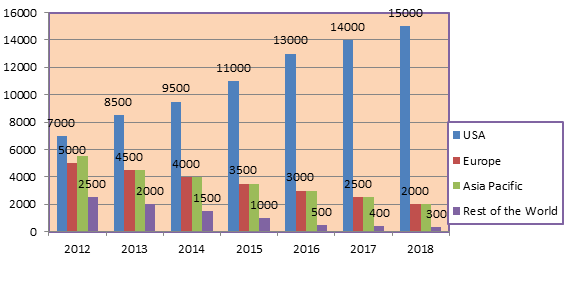
Fig: - 3 Global Tissue Engineering & Cell Therapy Market, By Region, 2009- 2018 (In Millions)
Societies associated with Stem Cell Research
-
Adult Stem Cell Research Network
-
International Society for Stem Cell Research (ISSCR)
-
Stem Cell Society Singapore
-
American Association for Cancer Research (AACR)
-
American Cancer Society
-
American Society for Cell Biology
-
Australian Society for Stem Cell Research
-
American Society of Clinical Oncology
-
Cell Therapy Foundation
- Tissue Engineering and Regenerative Medicine International Society
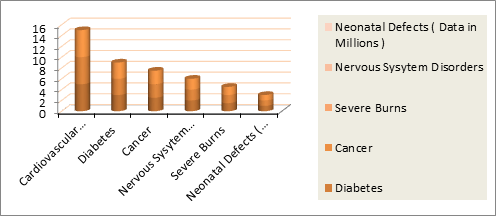
Fig :- 4 Graph showing Stem Cell therapy for diseases
It's the delegate's / Speaker responsibility to investigate the visa requirements for USA and to apply for a visa, if necessary. Individuals requiring an official Letter of Invitation from the conference organizers can request one by email by writing to us at cellulartherapies@annualamericacongress.org
To receive a Letter of Invitation, delegates, accompanying persons/children, student/post-doc/youth delegates and exhibitors must first register for the conference.
The registration fee minus a handling fee of USD 100 will be refunded after the conference if the visa was applied for in time and proof is shown that a visa could not be granted even though all requested documents were submitted. Refund requests must be made in writing and sent to the Cellular Therapies 2018 via email.
All expenses incurred in relation to the conference are the sole responsibility of the delegate. The Letter of Invitation does not guarantee an entry visa to USA. However, the conference organizers will not directly contact embassies and consulates on behalf of delegates.
The deadline for requesting a Letter of Invitation is one month before travelling to USA.
Chronic inflammation and mucus hyper secretion are the factors responsible for various respiratory diseases including throat and lung cancers: Prevention and management through exercise interventions
1. 2017 Health Camp
Conference Highlights
- Cell Therapy
- Gene Therapy
- Cancer Gene Therapy
- Immunotherapy
- Genetic Medicine
- Clinical and Translational Research
- Cell Therapy Bio Processing
- Stem Cells Growth and Regeneration
- Stem Cell Therapeutics in Modern era
- Clinical Applications of Stem Cells
- Cancer Cell Biology
- Biomedical Engineering
- Biomaterials and Biomechanics
- Medical and Nano Biotechnology
- Biomaterials and Tissue Engineering
- Biomedical Sensors and Instrumentation
- Bio Imaging and Signal Processing
- Bioinformatics and Computational Biology
- Bio Robotics and Biosensors
- Genetic Engineering and Genomics
- Medical Rehabilitation and Assistive Technology
- Cell Biology
- Molecular Biology
- Different types of Cancer
- Chemotherapy
- Experimental Cancer stem cell treatments
- Alternative Treatment and Cancer
- Cancer Immunotherapy & Nano Medicine
- Nursing Oncology and Care
- Cancer Bioinformatics and Clinical Medicine
- Pediatric Oncology
- Cancer Pain Management
- Cancer Prognosis
- Cancer Genomics and Metabolomics
- Genetically modified Stem Cell Therapy
- Cancer Stem cells detection and diagnosis
- Stem Cell Banking
- Tumor cell science
To share your views and research, please click here to register for the Conference.
To Collaborate Scientific Professionals around the World
| Conference Date | October 17-18, 2018 | ||
| Sponsors & Exhibitors |
|
||
| Speaker Opportunity Closed | Day 1 | Day 2 | |
| Poster Opportunity Closed | Click Here to View | ||
Useful Links
Special Issues
All accepted abstracts will be published in respective Our International Journals.
- Journal of Clinical & Cellular Immunology
- Journal of Stem Cell Research & Therapy
- Journal of Bioengineering & Biomedical Science
Abstracts will be provided with Digital Object Identifier by






